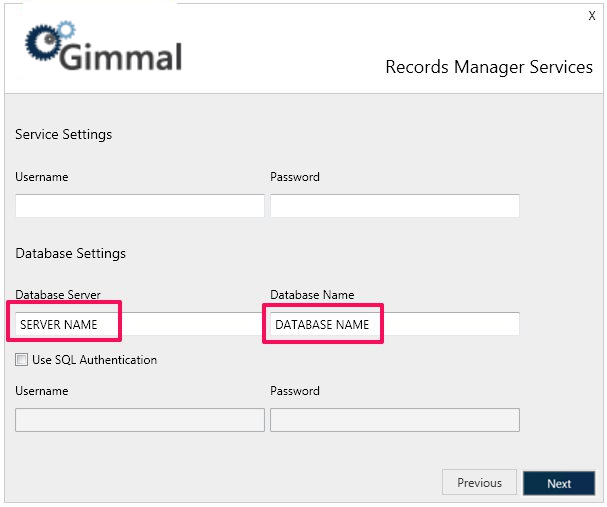Disaster Recovery
Preparing for Disaster Recovery
Preparing for disaster recovery of Records Management is a matter of ensuring that you have a proper SQL Server Maintenance Plan in place to handle the backing up of the Records Management database on regular intervals.
It is important to note that the Web and Services that makeup Records Management can simply be re-installed on another server and pointed to any Records Management database and, therefore, have no relevance in terms of disaster recovery. The database, on the other hand, is where all of the mission-critical information is stored and maintained. Therefore, it is absolutely critical that regular backups are captured and stored in a secure location where they can be accessed should the need arise.
In the event that a disaster does occur, having ensured that you have a working SQL Server backup in place, you should have nothing to worry about when recovering the system.
Review the following SQL Server documentation for information on SQL Server backup and restore strategies: http://technet.microsoft.com/en-us/library/ms189647.aspx
Backing up the Records Management Database
To perform a backup of the Records Management database, follow the referenced SQL Server documentation: http://technet.microsoft.com/en-us/library/ms187510
In production scenarios, a SQL Server Maintenance Plan should be created, which backs up the Records Management Database on regular intervals. The SQL Server documentation for this can be found at the following location: http://technet.microsoft.com/en-us/library/ms189647.aspx
Considerations
When choosing a backup strategy for Records Management, you should analyze the backup strategies used by each repository where the content being managed by Records Management is actually stored, and choose a strategy that most closely resembles what they use. This will ensure that if both systems are lost, they can be restored to a similar point in time.
Recovering From a Disaster
Restoring the Records Management Database
In order to restore a backup of the Records Management database, see the following SQL Server documentation.
Installing Records Management using a Recovered Database
Once the Records Management Database has been restored, the next step is to install both the Records Management Web and Service.
Records Management Web
To install the Records Management Web, when the Database Settings screen displays, enter the name of the Server and Database to which the backup was restored and de-select the option to “Automatically Create the Database.”

Records Management Processing Service
To install the Records Management Processing Service, when the Database Settings screen displays, enter the name of the Server and Database to which the backup was restored.

